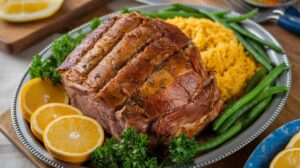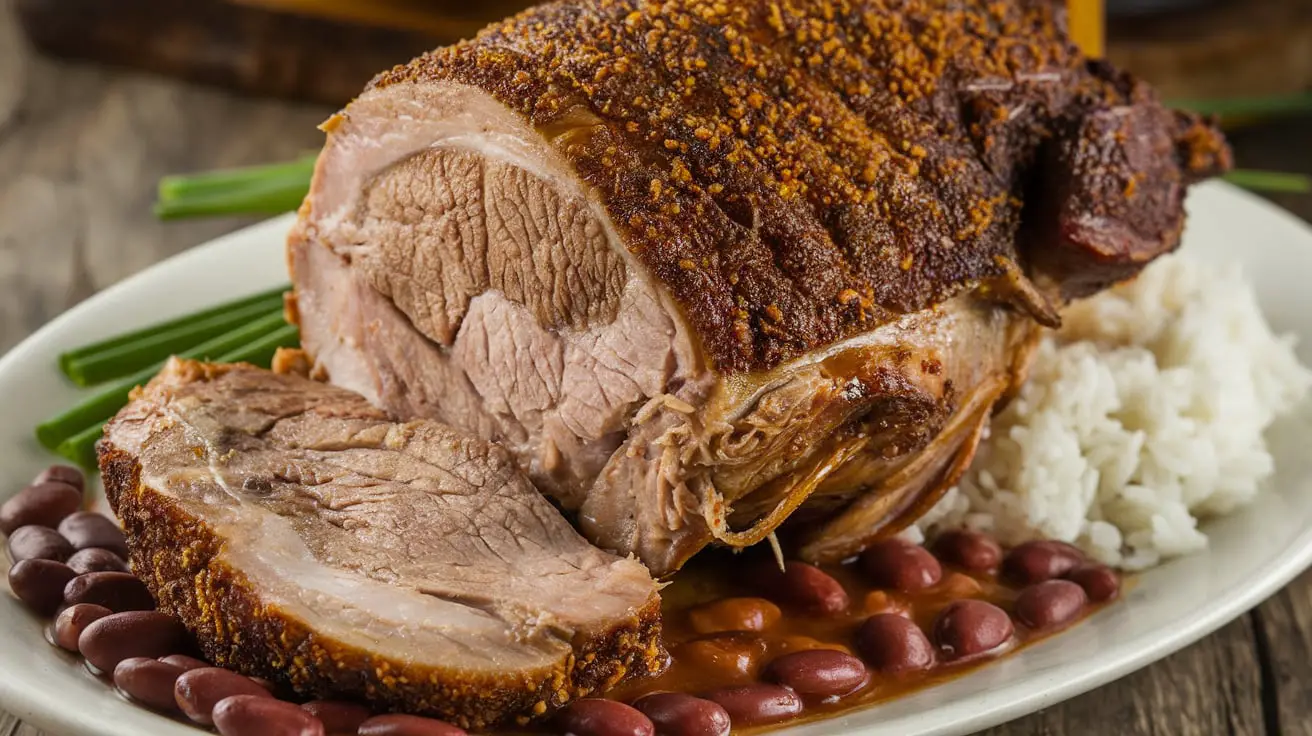Puerto Rican Pernil: A Celebration of Flavor and Tradition
Few dishes embody the heart of Puerto Rican cuisine as much as Pernil. This slow-roasted pork shoulder, seasoned with a medley of traditional spices, is a must-have for holidays and special gatherings. Its crispy skin and tender, flavorful meat have made it a centerpiece in Nochebuena feasts and other celebrations. But what makes Puerto Rican Pernil so special?
The Rich History of Pernil
The roots of Pernil trace back to Spain, where the word derives from “pierna,” meaning leg. When Spanish colonists arrived in Puerto Rico, they brought with them culinary techniques that blended seamlessly with local ingredients and traditions. Over time, Pernil evolved into a dish that symbolizes Puerto Rico’s diverse cultural heritage.
Discover more about the history of Puerto Rican cuisine and how influences from Spain, Africa, and Indigenous Taíno people have shaped its flavors.
Today, Pernil is more than just a meal; it’s a ritual. The preparation process brings families together, reflecting the island’s strong emphasis on community and tradition. For more authentic recipes that honor Puerto Rico’s culinary legacy, visit Traditional Puerto Rican Recipes.
Ingredients and Preparation
Crafting the perfect Pernil begins with selecting the right ingredients:
- Pork Shoulder (bone-in): The star of the dish, chosen for its marbling and flavor.
- Garlic: Minced or slivered to infuse the meat.
- Sofrito: A blend of onions, peppers, and cilantro for depth of flavor.
- Adobo Seasoning: A must-have for authentic Puerto Rican taste.
- Sazón with Annatto: Adds color and earthiness.
- Citrus Juices (orange and lemon): For brightness and acidity.
- Olive Oil and Oregano: Enhances the marinade and balances flavors.
Preparation Steps
- Marinate the Pork:
- Score the pork shoulder to allow the marinade to penetrate deeply.
- Rub the marinade thoroughly and refrigerate overnight for maximum flavor.
- Roast to Perfection:
- Cook the Pernil at a low temperature, allowing the meat to tenderize slowly.
- Finish at high heat to achieve the signature crispy skin (cuero).
- Rest and Serve:
- Let the meat rest before carving to retain its juices.
- Pair with traditional sides like arroz con gandules and tostones for a complete meal.
Cooking Techniques for Success

Traditional Oven Roasting
- Roast at 325°F (165°C) for 4-6 hours, depending on the size of the pork shoulder.
- Baste occasionally to keep the meat moist.
Alternative Methods
- Slow Cooker: Ideal for busy cooks; it ensures tender meat but lacks crispy skin.
- Grilling: Infuses the pork with a smoky flavor, adding a modern twist.
Common Pitfalls to Avoid
- Skipping the overnight marinade reduces the depth of flavor.
- Overcooking can dry out the meat; use a meat thermometer to ensure perfection.
Serving Puerto Rican Pernil
When it comes to serving, Pernil shines as the centerpiece of a Puerto Rican feast. Pair it with:
- Arroz con Gandules: The quintessential rice and pigeon peas dish.
- Tostones: Crispy fried plantains for a delightful contrast in texture.
- Pasteles: Savory cakes wrapped in banana leaves, often enjoyed during holidays.
For an authentic beverage pairing, try Coquito, a creamy coconut-based drink, or a glass of Puerto Rican rum.
FAQs About Puerto Rican Pernil
What cut of meat is used for Pernil?
Pernil traditionally uses a bone-in pork shoulder for its rich flavor and tender texture.
How long should I marinate the pork?
For best results, marinate the pork shoulder overnight or up to 24 hours.
Can I cook Pernil in a slow cooker?
Yes, though it’s best to finish it in the oven for crispy skin.
What are common side dishes served with Pernil?
Classic accompaniments include arroz con gandules, tostones, and a refreshing salad.
How do I ensure the skin is crispy?
Cook at a low temperature initially, then finish at high heat for the perfect cuero.
Beyond the Basics: Regional Variations and Modern Twists
Every family in Puerto Rico has its unique take on Pernil. Some add vinegar to the marinade for extra tang, while others experiment with spice blends like paprika or cumin. Modern adaptations include:
- Smoked Pernil: Using a smoker to add rich, smoky undertones.
- Pernil Tacos: Incorporating the shredded pork into tacos for a fusion dish.
- Stuffed Pernil: Adding a stuffing of plantains or rice for a surprise element.
Conclusion
Puerto Rican Pernil is more than just a dish; it’s a celebration of flavor, culture, and tradition. Whether you’re preparing it for a festive gathering or simply exploring new cuisines, this iconic recipe is sure to impress. Dive into the world of Puerto Rican flavors and let Pernil transport you to the vibrant island of Puerto Rico.

